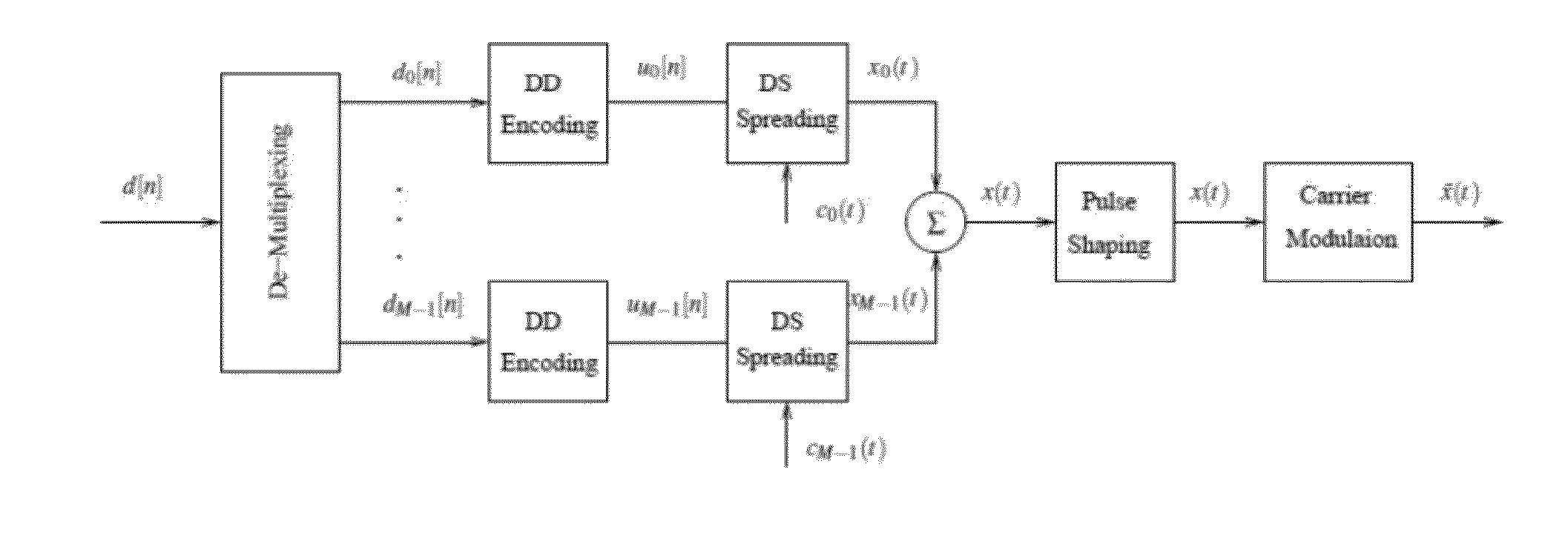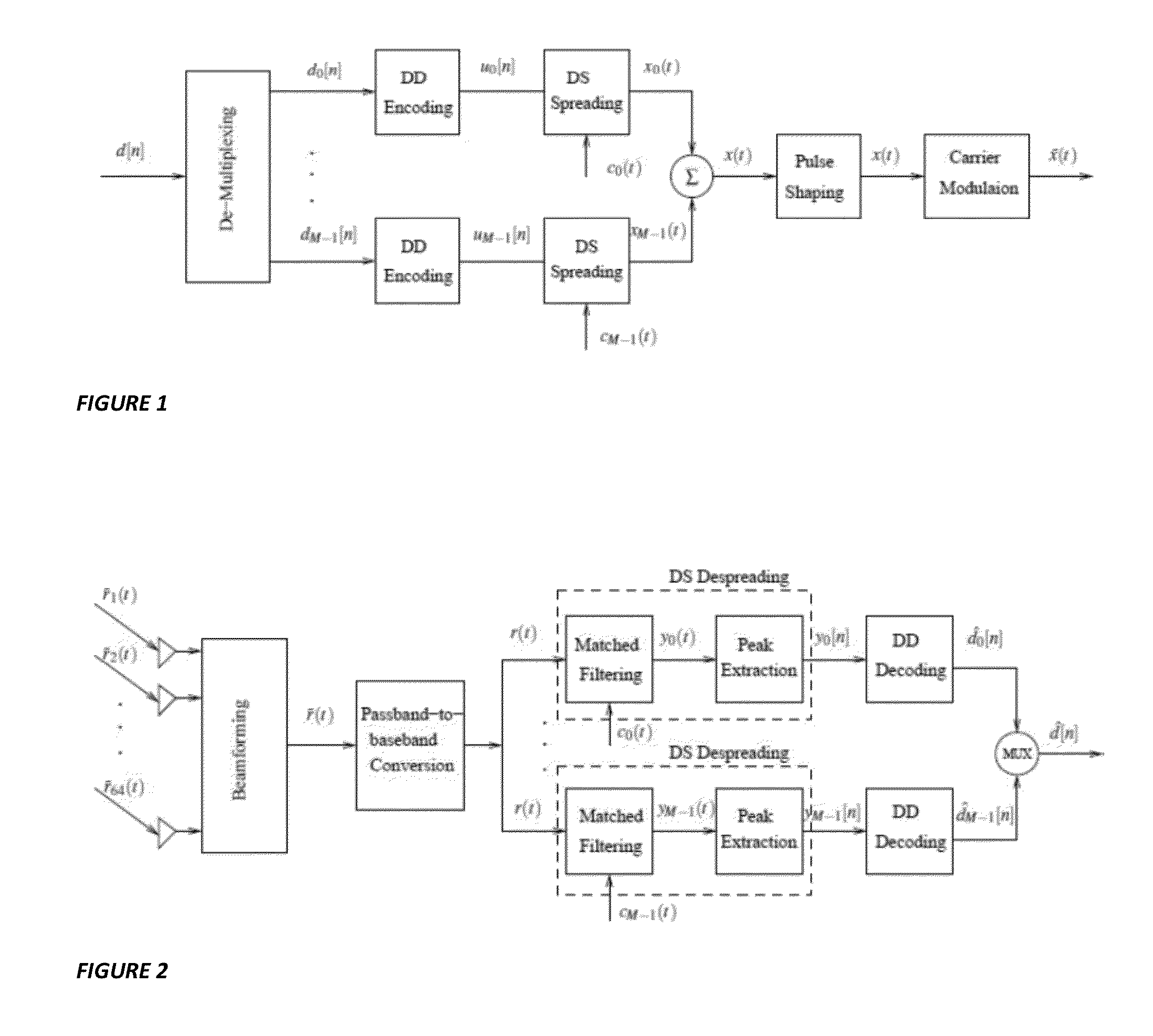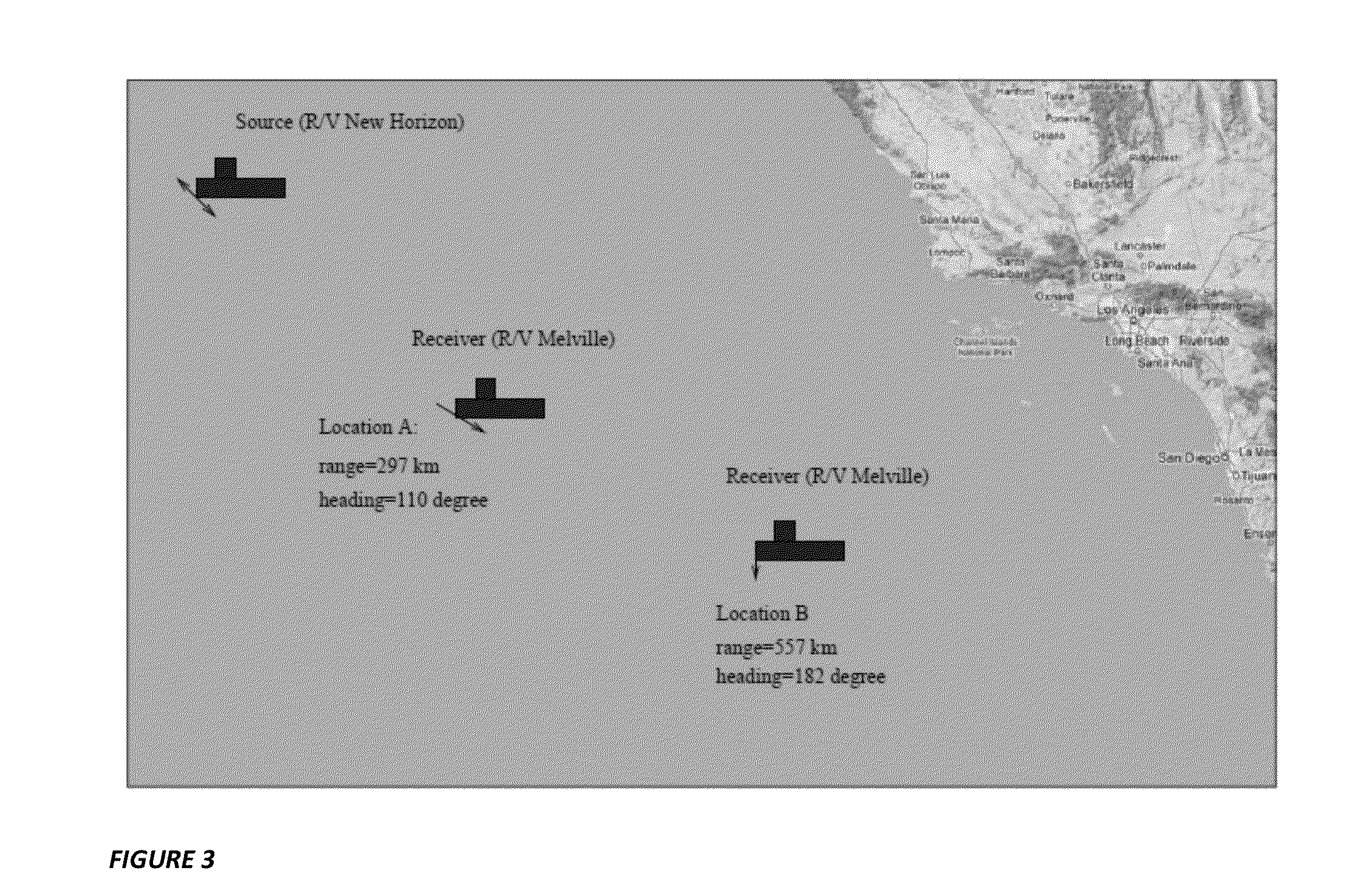Method for mobile underwater acoustic communications
a technology mobile communication, applied in the field of underwater acoustic communication, can solve the problems of difficult to deal difficult to increase the snr, etc., and achieves simple receiver processing, enables bandwidth efficiency improvement, and increases the snr via processing gain
- Summary
- Abstract
- Description
- Claims
- Application Information
AI Technical Summary
Benefits of technology
Problems solved by technology
Method used
Image
Examples
experiment setting
[0063]
[0064]As illustrated in FIG. 3, the LRAC10 experiment was conducted in deep water off the Southern California Coast in September 2010. Two research ships from Scripps Institution of Oceanography were involved. The source ship (R / V New Horizon) towed a J-15 source at a speed of 2-3 knots around the region centered at location (34° N, 129° W). The source was deployed at a depth of about 75 m with a source level of approximately 172 dB μPa@1 m. The receiving ship (R / V Melville) towed a HLA (Five Octave Research Array or FORA) mostly at a speed of 3.5 knots at a depth of about 200 m. The 189-m long ultra-low frequency (ULF) sub-aperture of the FORA was used for reception. The sub-aperture consisted of Nr=64 receiver elements equally spaced at d=3 m.
[0065]To test DD-SS, two DD-SS signals were transmitted using a bandwidth of B=200 Hz ranging between fl=100 Hz and fh=300 Hz. The two DD-SS signals were generated by using the scheme described in Section II with different signaling par...
PUM
 Login to View More
Login to View More Abstract
Description
Claims
Application Information
 Login to View More
Login to View More - R&D
- Intellectual Property
- Life Sciences
- Materials
- Tech Scout
- Unparalleled Data Quality
- Higher Quality Content
- 60% Fewer Hallucinations
Browse by: Latest US Patents, China's latest patents, Technical Efficacy Thesaurus, Application Domain, Technology Topic, Popular Technical Reports.
© 2025 PatSnap. All rights reserved.Legal|Privacy policy|Modern Slavery Act Transparency Statement|Sitemap|About US| Contact US: help@patsnap.com



